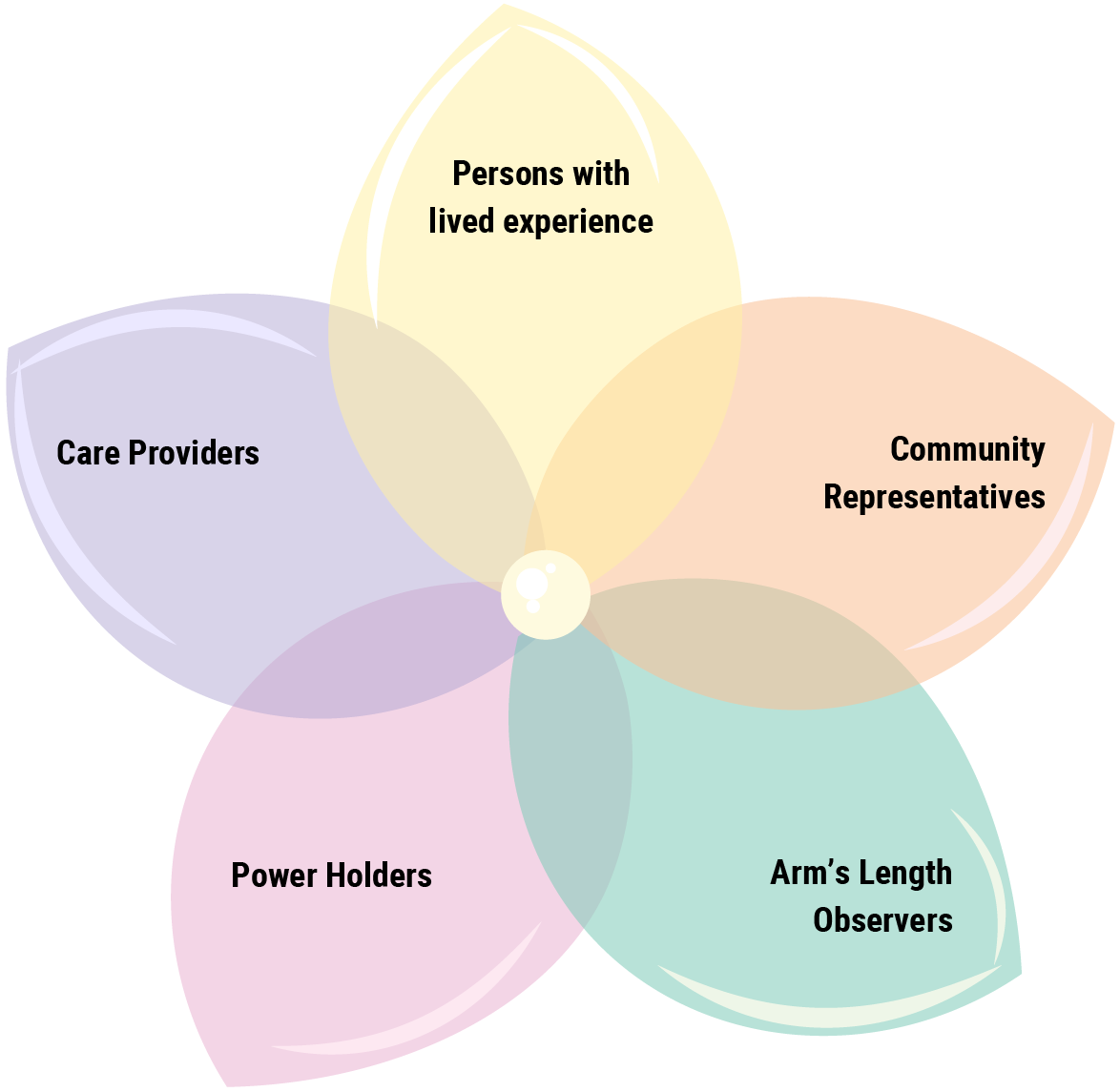3.4 Whose Voices Do We Need?
Engaging in knowledge justice takes time. As you may have experienced in the previous activity, it can be emotional and complicated to identify our biases.
So, another way we can begin to apply knowledge justice is by centring our thinking around the actual people involved. We want to consider whose voices or perspectives will help us fully understand a scenario, before we make a decision or reach a conclusion. This includes using an intersectional lens to think critically about who is knowledgeable or an authority on our topic. Sometimes, like with our case study example, the answer is complex.
As with self-reflection, this element of knowledge justice requires us to stop and pause. But now we look outside our own biases to reflect on who (or what) we consider an “expert.” Is someone with lived experience of a disabling illness, for example, less knowledgeable about it than a researcher who has studied many hundreds of patients, but at arms-length? Instead of answering this question directly, a knowledge justice approach encourages us to consider the value of both persons’ perspectives.

The Voices Flower above offers an alternative to the Levels of Evidence pyramid discussed in our earlier video. Rather than choosing only one type of evidence or thinking about one source of knowledge as “better” than another, consider how we might benefit from the perspective of multiple ‘knowers’. The Voices Flower encourages us to consider: who is knowledgeable about what I need to learn?
 Stop and Reflect
Stop and Reflect
Use the Voices Flower to answer these questions about our case study:
- Who is affected by this case?
- Who has lived experience or can speak about it first-hand?
- Who else will be speaking about this case? Writing about it? (And whose interests do they have in mind?)
- Who might be considered an “expert” on this case?
- Whose voices must be included when you’re making informed decisions?
Again, take some time to answer these questions from your own perspective. You can refer to the flower diagram to remind yourself about the different voices we might consider.
All activities can also be found in a downloadable workbook. Visit the ‘Using this Resource‘ page to access the workbook in MS Word and PDF formats.
In the video below, the authors share our answers to these questions as they relate to the case study and evidence-based decision-making. We have also outlined how we each organize our thoughts when using the voices flower as a tool.
A term coined by Black feminist legal scholar Dr. Kimbleré Crenshaw to describe the ways in which our identities, like race, gender, class, ability, etc., intersect to create overlapping and interdependent systems of discrimination or disadvantage.

